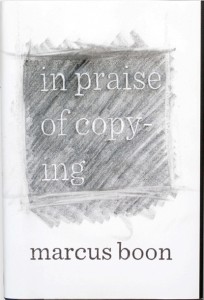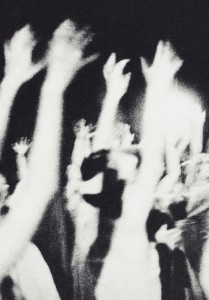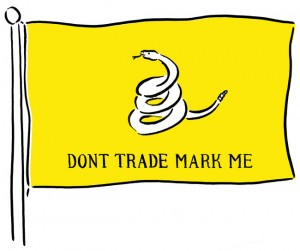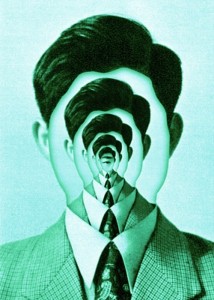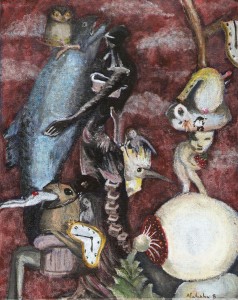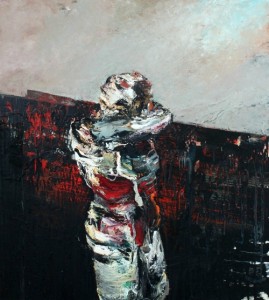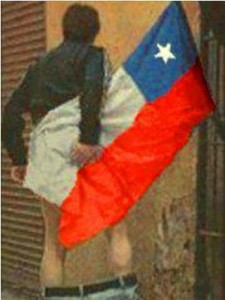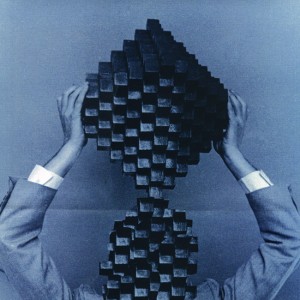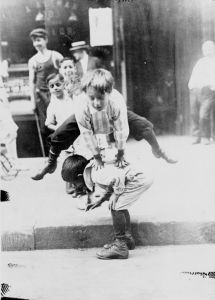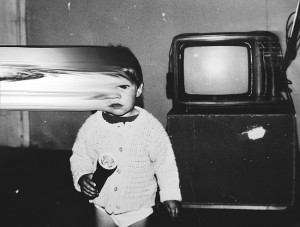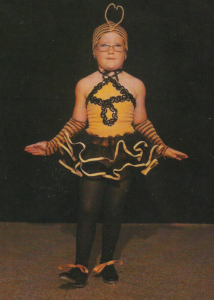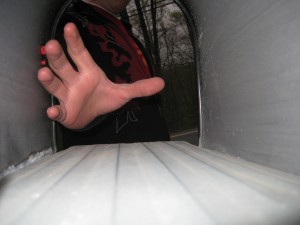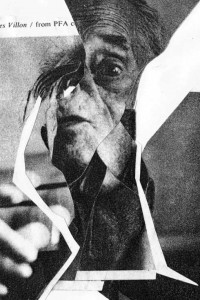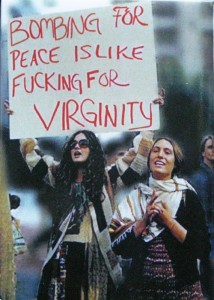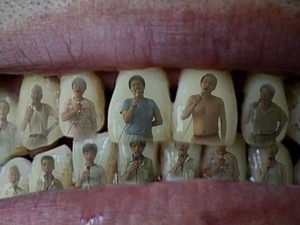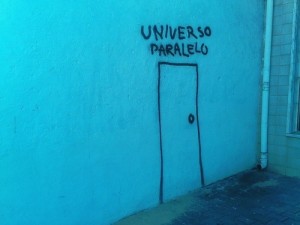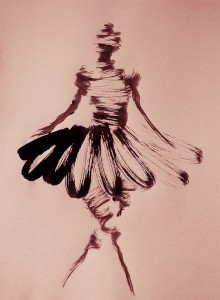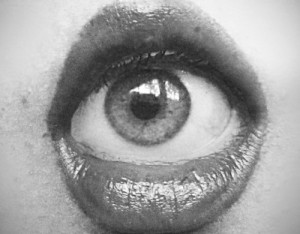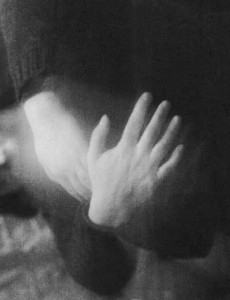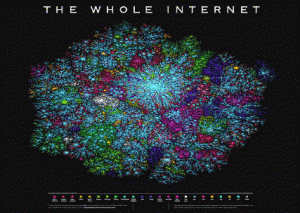From Marcus Boon’s brilliant Harvard University Press book, released in 2010. Marcus Boon is Associate Professor of English at York University in Toronto. He is the author of The Road of Excess: A History of Writers on Drugs and In Praise of Copying (both from Harvard University Press), and the editor of Subduing Demons in America: Selected Poems of John Giorno, 1962-2007 and America: A Prophecy! The Sparrow Reader (both from Soft Skull). He writes about music for The Wire and blogs at inpraiseofcopying.wordpress.com.
Each moment of copying is unique.
Forgery is contagious.
Cinema: the compulsion to repeat in the face of trauma
Without the alibi of art.
What is closest to us remains a mystery
An ethics of care that does not require ownership
Body without end, without appendage, without principal parts.
Economy
Copia was clearly a goddess of economy in ancient Rome; and according to Jacques Derrida, mimesis will in every case be a matter of economy. Every copy, ever act of exchange, presupposes the establishment of an equivalence between a and b, the assumption that they are like or equal to each other in some way. There are different kinds of economies, all of which manage or appropriate mimetic energies.
Copying as Dependent Origination
Buddhist practice and philosophy is always involved in the management, structuring and directing of mimetic energy and the exchanges and equivalences by which it is organizes. For the Theravadin schools, this means the refusal of all exchange, leading to nirvana as a state of extinguished desire. For the Mahayana schools, it suggests a total engagement in the vast network of dependently originated, relative existence in order to reveal the enlightened aspect which is immanent to it. The Net of Indra is the most complex configuration of economimetic exchange, for every jewel in the Net reflects every other monad-like component of relative existence, in the form of a chaotic flux.
Style
We all wore similar clothes, yet we all brought some individuality to how we wore them, even though they were copies. Style is a way of copying, a way of imitating, and it is this way which can be said to be original.
Music
The great Balinese gamelan master Wayne Lotring once said, “In my time, all music was nothing but nuances.” By “nuance” he meant the recognizable mastery of a form, along with the ability to reveal the multiple variations of which that form is actually structured. And to reveal these variations… (as) copies that emerge from and fade back into the emptiness which is their ultimate nature.
Copia
But localized folk collectives, such as street vendors in Southeast Asia, or users of fileshare programs around the world, already inhabit a vastly expanded public domain which is enacted in the systems of exchange that they are involved with. What is needed today is an expansion of the space and opportunities conducive to the mutual appropriations of folks cultures, for copia involves a movement of forms and energies that is antithetical to that of private property. It is open, unobstructed, and – from the point of view of form – inherently multiple, excessive, and abundant.
Variation
Gilles Deleuze argues that we can understand repetition only “once we realize that variation is not added to repetition in order to hide it, but is rather its condition or constitutive element, the interiority of repetition par excellence.”
Sex
In the strict sense of the term, though, sexual reproduction through the transmission of genetically coded traits is copying.
Consider sexual reproduction as montage. The proximity of bodies and minds; insemination; the cutting-up and combining of the mother’s and father’s DNA. Then the slow process of transformation and growth of the fetus.
Concealing and
Concealing and unconcealing, which Heidigger points to as the rhythms of Being, are aspects of a mimetic process. The unborn baby is relatively undifferentiated from the mother’s body; it emerges out of a sameness, yet evidence of this emergence takes the form of signs of differentiation which the mother is aware of. The mimetic process continues, after the unconcealing of birth, with breastfeeding, and with the ongoing need for intimacy with the mother’s body. All of this is well known. But what if such a mimesis was actually the primary state, a stateless state of becoming – a slow/fast rolling wave from conception through birth, “being,” death, and onward that never ends, and where “outward appearance,” in the sense of a particular fixed identification, was, finally, deceptive?
Non-duality
Lacoue-Labarthe goes on to say that “what is threatening in mimesis is feminization, instability, hysteria. He cites Luce Irigiray briefly, but does not pursue the topic. Yet Irigaray speaks at length of what she calls “maternal sameness,” which she defines in terms very close to that of nonduality, as a similarity beyond concepts. “This sameness is not abyss; it neither devours nor engulfs. It is an availability so available that for one who lives for utility, for mastery, the cash nexus, debt, this assumption of availability – which precedes any position that can be discerned – arouses anxiety and hence efforts to name and designate causes. This sameness is the maternal-feminine which has been assimilated before any perception of difference…
Even the word “bag,” as in “Louis Vuitoon bag,” comes from the Sanskrit word bhaga, one of whose meanings is womb. In absolute terms, nonduality is beyond all concepts, including those of gender. There are, however, sites, situations, beings, with a privileged relation to the nondual, since they model or instantiate it, including the maternal-feminine, whether in a mother looking after a baby, or the drag queen House rulers of Paris Is Burning…
Empty
Ultimately, there is only emptiness, the nameless, wild, chaotic nonduality that lies beyond all concepts and labels, where “matter” is in a continuous state of self-devouring flux and where forms live, mutate, and die from second to second. In the Tibetan tantric tradition, this is known as durtro, literally “charnel ground” or “cremation ground,” but metaphorically the space of impermanence and transformation.
The human world, where I speak of myself, am given a name, and enter a specific society, is a particular, highly continent iteration of this universe, and we go to great lengths to sustain our image of permanence as it constantly runs up against the facts of impermanence, dependent origination and emptiness.
Violence
Contemporary Vedanta teacher Sri Nisagadatta Maharaj once responded as follows to a questioner demanding to know whether “existence and conflict are inseparable.”
M: You fight others all the time for your survival as a separate body-mind, a particular name and form. To live, you must destroy. From the moment you were conceived, you started a war with your environment – a merciless war of mutual extermination, until death sets you free.
Q: My question remains unanswered. You are merely describing what I know – life and its sorrows… Give me the final answer.
M: The final answer is this: nothing is. All is a momentary appearance in the field of the universal consciousness: continuity as name and form is a mental formation only, easy to dispel.
What is striking in this exchange is the insistence on the ubiquity of violence at the relative level which dissolves into nonduality at the ultimate level.
The State
Louis Althusser’s ideological state apparatuses – are concretized, given the semblance of permanence, through mimesis. In 1938, Bertrand Russell defined power as “the production of intended effects.” Thus, he defined power in terms of mimesis – as the perpetuation of a structure that one imposes through one’s will or through a force which must be maintained in order for that structure to stay the same…
Violence would then appear as a particular way of labeling, framing, or imitating the transformative mimetic energies of which humans and the world are composed – in other words, a way of appearing to control, to master, the impermanence not just of nature, or human social relations, but the subject’s own sense of itself in relation to others. Violence as directed human or organic life action is not just a matter of “survival,” in the Darwinian sense, but an aggressive attempt to fix this impermanent flux through imitating it in an apparently controlled way. In particular, it strives to fix a permanent self as existing separately from this flux through the projection of the flux onto an exterior other who is deformed by violence while, optimally, the violent subject experiences his or her own continuity through the agency of an act of violence.
Power
Power functions through imitation. In Bertrand Russell’s definition, it is the ability to produce intended effects. Power, then, is always mimetic, since the effect is the repetition of the intention.
History
…most of what we call history is arguably the history of appropriation, and the history of one group stealing from another group and claiming those people’s bodies, minds, properties, lands, or cultures as their own.
Colonial Subject
Homi Bhabha argues that imitation is forced on colonial subjects so that they may appear as “proper” and functional servants of empire, but it is also limited or bounded so that the colonial subject is never allowed the colonialist’s full status of being. The “proper” political subject undergoes processes of mimetic transformation that endow him or her with the status of citizenship and legal-political identity. The mimesis of the colonial subject, however, always “fails;” it is demanded but at the same time repudiated, ensuring that those who are governed but who lack rights are thrown back into the inauthenticity of the mere copy, empty of essence. Thus, the distinctions and power that hold together structures of inequality are maintained. The problem is not that mimesis is bad or wrong, but that the freedoms of open, unobstructed mimetic transformation which are enjoyed by those who have power are denied to the governed. The latter are forced to obey a highly ideological framing of mimesis…
Shit Revolution
In a text addressing his former comrades in the Popular Front, Bataille opposed appropriation to excretion – excretion as the inevitable loss of that which has been accumulated, as that which must be disposed of. He argued that any concept of revolution that consisted solely of a transfer of rights of appropriation was inadequate, and that the real revolutionary project was that of organizing extravagant projects of waste disposal that go beyond the traditional methods of scapegoating, war, etc.
Capital
…global capital is itself nothing other than institutionalized and legitimated appropriation on a vast scale.
Copy as Scapegoat
According to Girard, the act of finding someone to blame for all of those mimetic tricks, slips, transformations, all those copies, and then punishing that someone, is what holds society together…
While Girard says that this victim is arbitrary, Lacoue-Labarthe points out that often the figure is already associated with mimetic activity – he or she is an actor, an imposter, a copyright breaker, or one of the many mythical trickster figures who incarnate the energies of mimetic deception: Khezr in Islam; Legba in Haitian Vodoun; Hermes in Greek mythology; Mara the tempter in Buddhism; Satan in Christianity… More broadly, we can say that the word “copy” today carries with it that negative judgment, that subtle but decisive abjection from the realm of legitimacy, that indicates scapegoating. The “copy” is the scapegoat for the immense and apparently unsolvable problems that mimesis, as a basic constituent of our situation, poses for us. It allows us to imagine that there are things called “copies” that can be identified, fixed as such, judged, and punished or removed entirely from our existence, so that we can live in a world where everything is what it appears to be, where deception never occurs, and where no one is ever deceived by anybody or anything – or at least where deception is always recognizable and manageable.
Art
Copying was an integral part of the visual arts until the 18th century, when the rise of originality and authenticity as aesthetic values, and the rise of various forms of intellectual-property law, retrospectively transformed the copier into a forger, and the multiplicity of similars and imitators into fakes. Where copying persisted, in name if not in fact, it was relegated to the applied arts or to folk arts, until the postmodern period, where the pervasiveness of copying in industrial societies was recognized.
History as Transformed Copy
Thus, the transformation of copying parallels a more general shift in our relation to history: to Darwin and evolution as the theory of the emergence of present organisms from a flow of historical similars and dissimilars; to Freud and the origins of a current symptom in a repetition of a past trauma; to Hegel and Marx’s dialectical view of history as a chain of responses and counter-responses.
Visual Deception
A 1946 British Royal Air Force film entitled Visual Deception divides the topic into two categories: disguise and display. Thus one camouflages where one is, while the giving the appearance that one is where one is actually not.
The Lie
In an elegant meditation on the possibility of a “history of the lie,” Derrida points out that the lie is often connected to action, specifically political action.
Rule Vs. Law
Baudrillard observes: “The game’s sole principle, though it is never posed as universal, is that by choosing the rule one is delivered from the law. Without a psychological or metaphysical foundation, the rule has no grounding in belief. One neither believes nor disbelieves a rule – one observes it.” This helps us to understand the implacable opposition between folk cultures and intellectual-property law. Folk practices of copying are based on rules – the open secrets of the symbolic order that one does not have to believe in but that one still has to observe. One is not deceived when one practices magic, for example, since magic “is a ritual for the maintenance of the world as a play of analogical relations, a cyclical progression where everything is linked together by their signs. An immense game, rule governs magic.” And it is through the rule that the power of copia is unfolded.
There is a key Mahayana Buddhist practice called, in Tibetan, Lojong (“mind training”), which consists of a series of slogans, or, to use Baudrillard’s word, “rules,” to be memorized and practiced. One of these slogans is: “Put all blame on the one.” Bascially, this means that when one encounters adverse conditions, one should put the blame on oneself, rather than on other people or factors. This is done not as a guilt trip, but as a way of cutting through the chains of cause and effect known as “karma,” which one participates in through blaming and through retaliating, because one mistakes an illusion for a reality. It is a practice whose purpose is not to turn one into, in the words of one of my teachers, a “doormat,” but to allow one to see through the dense network of deception (samskara) that the self ultimately creates through ignorance about how things are. The potential deceptions of mimesis are not a problem in Lojong practice, since every phenomenon is viewed as a copy that one can engage with through the observation of a rule, and thus the practice of copying can itself be appropriated for the training of the mind. The slogan after “Put all blame on the one” reads: “Meditate on everyone as kind.” This is arguably a projection, but it entails a practice that consists of unraveling another projection – that of hostile separateness – and generating compassion based on understanding the reality of the other’s situation and one’s own. One “copies” the thoughts of an enlightened mind in order to gradually “train” or “practice” (both of these words implying a repetition) and thereby becomes what one at first “merely” imitates…
“Put all blame on the one.” No individual or collective act of liberation can begin without recognizing this.
Situation
The ability of produce a certain appearance situationally is more valuable than the slow development of substantive skills.
Postmodern Art
In the world of computers, “cut and paste” is a dominant metaphor; more broadly, fragmentation, pastiche, and juxtaposition are characteristic of postmodernity. Indeed, art critic Nicolas Bourriaud has claimed that montage, and other practices of citation, repetition and appropriation, constitute the core of a contemporary art practice which he variously names “relational aesthetics” and “postproduction.” Bourriaud situates this centrality of montage within the context of globalization, the culture of the DJ as curator, selector, and sequencer of a vast historical and geographical archive, and the Internet a a limitless virtual space of assemblages governed by the logic of the click and the hyptertextual trace. Montage also plays a key role in contemporary critical theories, from Derrida’s theory of the trace, to Deleuze and Guattari’s assemblages and disjunctive syntheses, to Badious’ ontology of the pure multiple and Latour’s actor networks. In summary, a logic of montage is pervasive today, and as soon as we speak of acts of imitation without essence, this logic asserts itself as the construction of the similar from the dissimilar.
Placental Economy
…there existed an erotics of montage built around the intimacy and proximity of organically unrelated objects and entities as well as an erotics of collaboration. Luce Irigiray speaks of a “placental economy” that mediates self and other. The placenta modulates a boundary between mother and fetus…
Collage
The word “collage” (from the French, meaning “pasting,” “gluing”) is used to describe two-dimensional artworks incorporating found objects, while three-dimensional visual artworks made in this way, such as Cornell’s boxes, are often known as “assemblages.”
Politics of Montage/Collage
…montage and collage are not fundamentally aesthetic practices; they are part of the mimetic excess that is found throughout every society. Framing them aesthetically limits their radical potential and the potential for a transformation of the society we live in… To see the world, the self, and the community as montage, and to live the consequences of that vision with openness, without assigning it to a particular domain of human activity – this is the freedom toward which we are heading.
Recipes
Recipes are themselves something like manuals of montage, advising how to cut an object, subtract from it or to it, how to combine it with other things…
Naming
Hip hop is extraordinarily concerned with naming. Rammellzee speaks of the act of painting over other people’s graffiti tags (their names written on train cars, walls, or fences) as an act of assassination…
There is no essence, ground, or basis for any object’s existence outside of naming or labeling it. Naming brings the object into being as an object of consciousness, and is immensely powerful for this reason.
Naming enables the generation of a pattern. Naming enables measurement.
Laughter
Laughter is a recognition of the truth manifested in that slip, which is the slip that undoes the apparent permanence of the things of this world; and thus, as Simon Critchley notes, it is “an acknowledgement of finitude.”
Normal
Reality is a fabrication made by certain parties who have an interest in presenting this fabrication as “natural.” ‘Reality’ is simply a more or less constant scanning pattern… imposed by the controlling power… oriented towards total control.” (WB)
Spectacle
“the spectacle is capital to such a degree of accumulation that it becomes an image.” (Guy DeBord)
Digital Media
While a magnetic tape or vinyl disc records a continual real-time flow of sound onto a recording surface, creating an analogous (ie. analog) sound, a digital sound is sampled thousands of times per second, meaning that a “snapshot” is taken many thousands of times per second of the sound source, which is converted into digital code. Each snapshot is then sequenced and played back, in sequence, very fast (a CD has a sampling rate of 44,000 hertz, meaning that 44,000 snapshots are played back, in sequence, per second). We sample a sound by making a number of copies of it and playing them back in time. We sample an image by taking a number of very tiny snapshots of it and playing them back, side by side, on a computer screen. Thus, all sampled objects are, in effect, montages, and partake of the same viral power that montage has – which is the power of the fragment, the unfinished, discontinuous partial object.
Digital
A digital file is both a pattern and instructions for making a pattern… The digital is sandwiched between an analog disappearance into code at the recording and an analog appearance out code at the listening end… The code is ideology insofar as it structures all possible configurations and iterations of those elements.
Mass Production
…the falling of rain and snowflakes, the growth of leaves on trees, the spreading of trees into a forest, the massing of birds in flight.
Factory
…mechanical duplication of bronze vessels in China dates back to the 7th century BC, and Chinese factories utilized the division and specialization of labour to mass-produce lacquer and bronze objects in the first century AD.
MySpace
Even the ideology of individuality and/or uniqueness is mass-produced.
Aura
The folk object or commodity integrates within its outward appearance the marks of environment and history which constitute what Benjamin called its “aura.”
Body
Ten percent of our dry weight is bacteria.
Money
The very qualities that modern money is said to possess – storage of value, abstraction and convertibility, for example – illustrate the plasticity of mimesis, the incredible ease with which likeness or equivalence can be produced.
Infrathin
Thus, Duchamp’s infrathin, the smallest possible difference between similar things, asserts its full power in the computer; the difference between a one and a zero is an infrathin, or is becoming an infrathin as technologies seek the smallest, the briefest, the most subtle measurable difference between states of energy…
The Same, Not The Same
But is the difference between man and man not also an infrathin? Freud coined the term “narcissism of small differences” to describe the exaggeration of this infrathin as a way of trying to establish individual separateness and self. But the acceptable margin of our differentness is also very small; corporeal and mental deviations from the norm remain disturbing to us, and, in the past, excision from the community could be absolute. Conversely, excessive similarity is also considered disturbing. A control over the most delicate and obscure areas of consciousness and embodiment becomes a concern of the various operative forms of government, and as zones of normality and pathology are defined in every-finer detail, we are increasingly called upon to present ourselves as copies, as repetitions of a certain model, a certain framework. And this is no longer enforced through a crude behaviourism, as classic modern dystopian texts like A Clockwork Orange or 1984 imagined, but through drugs like Prozac, the manipulations of genetic engineering, or the requirements of the job market. Conversely, mass production today involve the demand that we present ourselves through the production of differences, through acts of mimetic transformation that can be framed within the order of the marketplace. The same/not the same.
Fair Play
After the inaugural act of violence with which one imposes a system, one seeks only fair play – ie. behaviour that accepts the newly imposed terms.
Threats
…the foreigner as the nonhuman, in authentic usurper who pretends to be like us; the feminine as the hysterical, irrational, duplicitous, seductive power of the false; the drug as inducer of a simulacrum of pleasure and happiness that leads to ruin; the counterfeiter, the pirate, the mafia as criminals who infiltrate legitimate economies with illegitimate fake products.
Internet
What the Internet offers us is not so much new forms of economy, production, and exchange (although the open-source movement has certainly made efforts in those directions), but the opportunity to render visible once more the instability of all the terms and structures which hold together existing intellectual-property regimes, and to point to the madness of modern, capitalist framings of property.
Practice
Practice is highly mimetic, is eminently transportable, and belongs to no one, despite all dogma to the contrary. One does not need to own in order to practice; if anything, a practice owns us, reshapes and reconfigures us, and inserts us in a dynamic collectivity.
